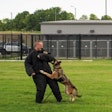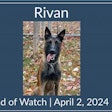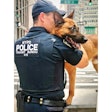The terrorist attack on the Israeli team during the 1972 Olympic Games in Munich and the failure to rescue the hostages clearly showed how poorly trained and equipped the police forces in Europe were for dealing with terrorists and how urgently new tactics were needed.
Modern urban terrorism, manifested by aircraft hijackings, embassy occupations and hostage taking, was a new and unfamiliar phenomenon for most of the police forces around the world. They had no experience in this type of warfare and there was no special formation to handle these incidents.
Conventional police forces deployed in large and normally slow-to-react formations were not capable of dealing with small, clandestine terrorist cells, striking swiftly and melting into the civil scenery. Moreover, massive and undiscriminating firepower for suppressing terrorists was unsuitable for use in delicate situations where civilian hostages were held at gun-point.
There was a need for a new type of special police unit to be used in the tactical fight against terrorists. A new concept was devised, dictating the creation of an outfit characterized by:
1. Flexible command and structure enabling rapid reaction to quickly changing situations.
2. Special tactical training applicable to different terrorist scenarios.
3. Skillful and professional operators with proper personal traits.
4. Employment of special weapon systems and equipment designed specifically for the new tasks.
Consequently, specialized tactical police intervention and response units have been created first in Europe and later, based upon their operational experience, also in other parts of the world.
The majority of the new police units were established within one or both of the following law enforcement organizations:
1. National Gendarmeries (French "GIGN"; Belgian "Diane"; Austrian "Cobra", Spanish Civil Guard's "UEI"; German Border Guard's "GSG9"; Italian Carabinieri's "GIS").
2.National Police forces (French "RAID"; Italian "NOCS"; Spanish "GEO"; Israeli "YAMAM").
The newly developed Counter-Terrorist (CT) and Hostage-Rescue-Units (HRU), as they became known, were given the task of leading the tactical fight against terrorism and, as such, were allocated the following missions:
1. Intervention in extreme terrorist attacks involving hijacking and kidnapping.
2. Supporting other security agencies in dealing with severe violent acts, including homicide, extortion and bomb attacks.
3. Protecting vital national assets, providing VIP protective services to key government personnel and protection of official guests of the state.
Organization and Training
Thorough study of the methods, tactical operations and internal organization of various terrorist groups was the basis for the structure and training of the new police CT units.
The basic structure found in most of these outfits follows a similar pattern that includes a headquarters unit, three to four combat units, a training unit, a support unit (engineers, divers, communication experts, etc.) and logistical services. In some cases an integral or attached aerial wing (mostly helicopters) might also exist.
The combat units regularly consist of a command element and a varied number of combat teams (four to five men each) that might be deployed in various operational mixtures.
The training programs adopted by most of the CT units are normally very intensive and rigorous, designed with the intention of developing the combat skills needed in the fight against terrorists.
Basic-level training is typically comprised of intensive physical training (martial arts and close-combat), tactical operations training, combat shooting from different positions, target practice and rappelling.
Advanced, and more specialized training, is largely dedicated to team-work exercises that include anti-hijack training, storming buildings (CQB), aircraft and vehicles, airborne unit training, high-speed driving, firing out of moving cars and helicopters and instruction of specialists (snipers, divers, explosives experts).
Weapons and Special Equipment
Besides training, specialized weapons and equipment are a cornerstone in the fight against terrorism. To a large extent, the most important "tools of the trade" found in the arsenals of the police CT units are the SMG, the sniper-rifle, the semi-auto pistol and the fighting shotgun.
In most of the CT engagements, the SMG is regularly preferred to assault rifles as the main attack weapon. The SMG is lighter and more compact and, consequently, easier to handle. This is especially appreciated when the user has to move in confined spaces or requires minimum encumbrance from the weapon in order to carry on other tasks. The SMG is easier to control in burst firing and at short ranges (100m or less) it is sufficiently accurate.
At first, the different versions of the Israeli UZI SMG were the most popular among CT units who were looking for a compact and reliable weapon that can take almost any rough treatment. Later on, the various models of the German Heckler & Koch MP5 family began enjoying universal success after being adopted by the German and British units. The most appreciated aspects of the closed-breech firing weapon were its stability in burst firing and the ease with which different types of accessories such as optical and laser sights and noise dampers could be fitted to it.[PAGEBREAK]
New designs are constantly tested by CT units and among the more promising are the Austrian Steyr TMP and the Belgian FN P90, especially suitable for close range work.
Semi-auto pistols are the secondary side arms carried by all members of the combat team. In certain scenarios, when one-handed firing might be needed (clearing rooms, storming an aircraft, climbing and rappelling) the pistol becomes the primary weapon of choice.
Through the years, most of the units have switched from revolvers to semi-autos, mainly due to their high-capacity magazines, positive safeties and DA carry mode. However, some of them, notably the French "GIGN", still consider the powerful .357 Magnum revolver the best choice.
For many years, the 9mm Browning "High-Power" was at the forefront among CT units due to its splendid design and reliability, but currently it is gradually being replaced by more modern designs like the SIG 226, the Glock family and the Beretta 92 series.
Sniper-rifles are one of the most important elements in any CT unit's arsenal. Long-range firing capability is considered vital to the successful suppression of hostage-takers and, accordingly, units are equipped with the best hardware of the day.
Because poor sniper shooting during the Munich incident triggered the massacre of the hostages, German manufacturers were quick to study the lessons and produced two of the best rifles - the Mauser 66 and the H&K PSG1 in 7.62mm, that dominated CT scenery for a long time. Equipped with advanced optical sights, infra-red sights and light intensifiers, these rifles were used extensively during the following years by many units.
Among the other prominent models in use, it is worth noting the French FR-F2, the Austrian Steyr SSG and the new family of heavy rifles in .50 caliber, of which the Barrett, adopted by Italian units, is the best known.
Fighting shotguns have been used by many CT units as close-assault weapons deployed in the final phase of an attack. The two most important types in use are the pump-action gun, whose best representative is the Remington M870, and the semi-automatic, exemplified by the Italian Franchi SPAS-15 or Benelli.
Being able to fire different types of ammo, shotguns were found to be very effective during house-storming incidents when used at contact-distance against locks, bolts and hinges, defeating them instantly.
Besides weaponry, police CT units are also lavishly equipped with specialized hardware and electronic gadgetry. Normally the list includes ballistic helmets, protective vests, gas masks, advanced communication systems, CS and Stun grenades, explosives and breaching devices as well as night vision equipment and voice monitoring instruments.
Most of the police units also have at their disposal specially converted and equipped cars (like the Mercedes limousines or the Range-Rovers), motorcycles, Jeeps and armored special operations vehicles.
Operational Deployment
Throughout the three decades that followed the Munich massacre, police CT units around the world were called to intervene in different types of terrorist incidents. Whenever good intelligence and sound operational planning were combined with thorough training and adequate weaponry (and also a bit of luck) - incidents were mostly resolved successfully. The following review lists some of the spectacular events:
February '76, Djibouti - French "GIGN" rescued 30 children after 24 hours of captivity on a bus near the Somali border.
October '77, Mogadishu - German "GSG9" rescued 86 passengers and 4 crew members of a "Lufthansa" airliner hijacked to Somalia.
May '81, Barcelona - Spanish "GEO" rescued 200 bank employees and customers after 48 hours of captivity, following a bank seizure by armed gunmen.
January '82, Padua - Italian "NOCS" rescued General James Dozier after a long period of captivity in a "Red Brigades" hideout, following his abduction in Verona in December '81.
September '87, The Mediterranean -American "HRT" unit arrested Fawas Younis on a yacht in international waters, following a two year investigation of his involvement in an airliner hijacking in 1985.
March '88, Aroer Janction - Israeli "YAMAM" rescued six passengers after several hours of captivity, following a bus seizure by three terrorists on the road from Be'er Sheba to Dimona.
December '94, Marseilles - French "GIGN" rescued all passengers and crew members of an "Air France" Airbus hijacked by Algerian terrorists.
Summary
Police CT units are extremely important elements in the fight against terrorism. In many cases they are the last-ditch defense. When all other measures fail, they are called in to handle the worst-case scenarios, in which lives are threatened in real time. Periods of relative tranquility tend sometimes to create the impression that these units are more of a burden than an asset. This is a dangerous illusion. The best human and material resources should be allocated to them. To support any other policy is to play with fire.
Eitan Meyr is a former assistant to the Counter-Terrorism Advisor to the Israeli Prime Minister. His main fields of expertise are Counter-Terrorist and Hostage-Rescue Units. He holds an M.A. degree in Criminology and B.A. degrees in Military History and Political Sociology. He is now reading for a Ph.D. degree. Mr. Meyr is currently engaged in several security projects in the private sector and writes for POLICE from Israel.














